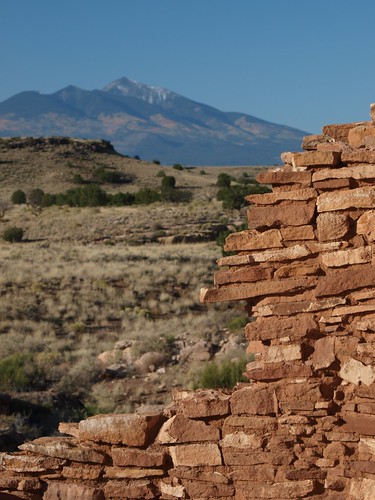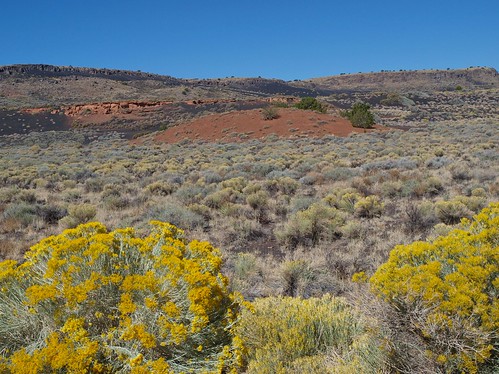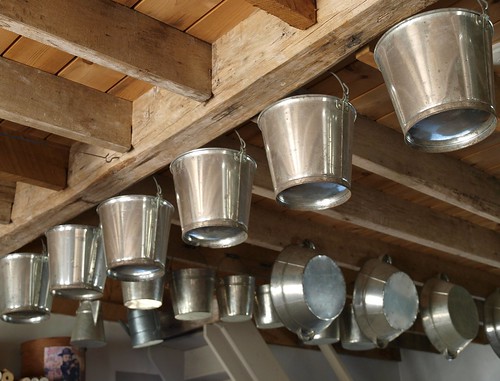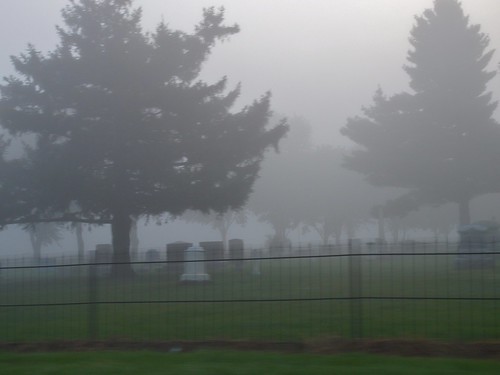Wupatki National Monument, just twenty minute drive north of Flagstaff, Arizona, was established by the National Park system to preserve Native American archeological sites dating from the 1200s and the surrounding lands.
The area has geological formations and abrupt elevation changes that, within only a few miles, provide six different eco-systems, and a wide variety of habitats for plants and animals.The effects of elevation are visible along the 36 mile loop road connecting Wupatki with Sunset Crater Volcano National Monument to the south.
A drive along this road isa journey from desert grasslands (at less than 5,000’ elevation) to Ponderosa pine forest (near 7,000’). In October, the desert floor springs to life with flowers and new growth. Rabbitbrush glows bright yellow against the black cinders, remains from the nearby volcanic eruption, the red rock in the distance, and the blue sky.












